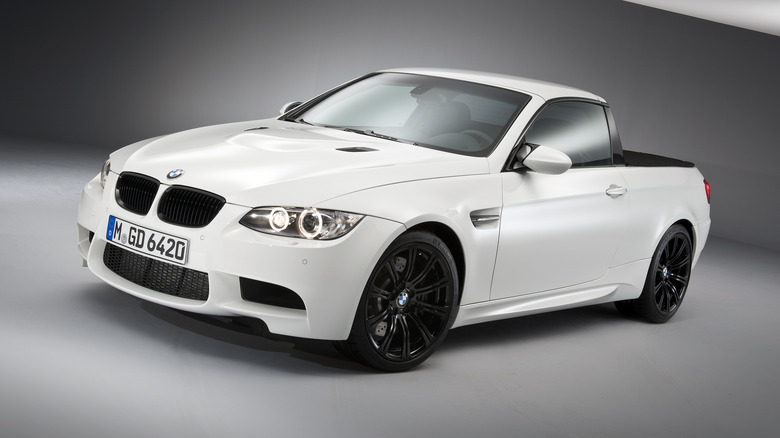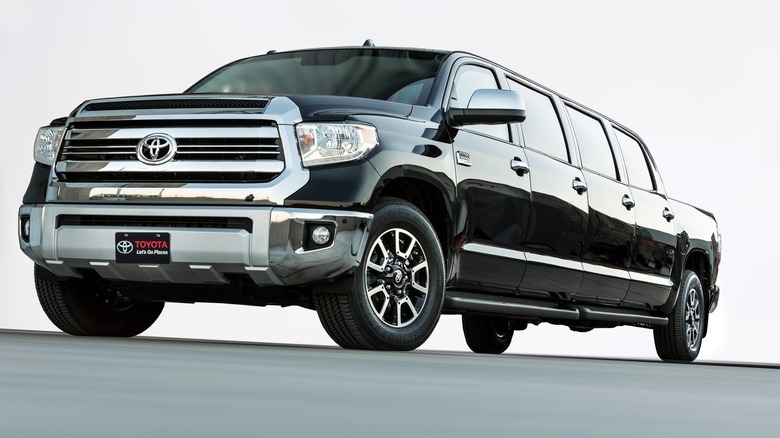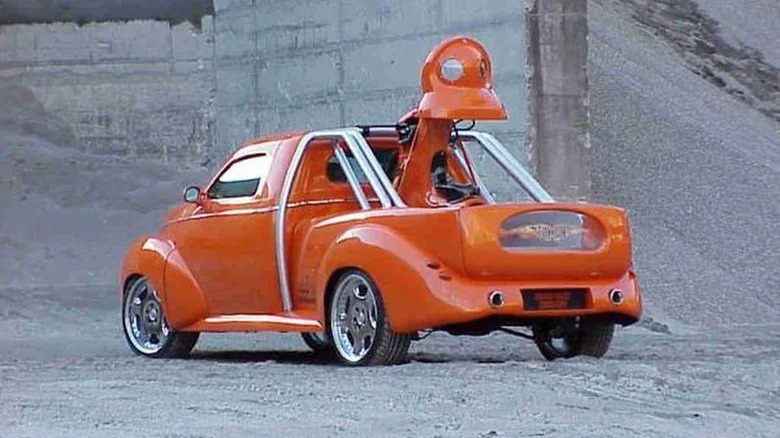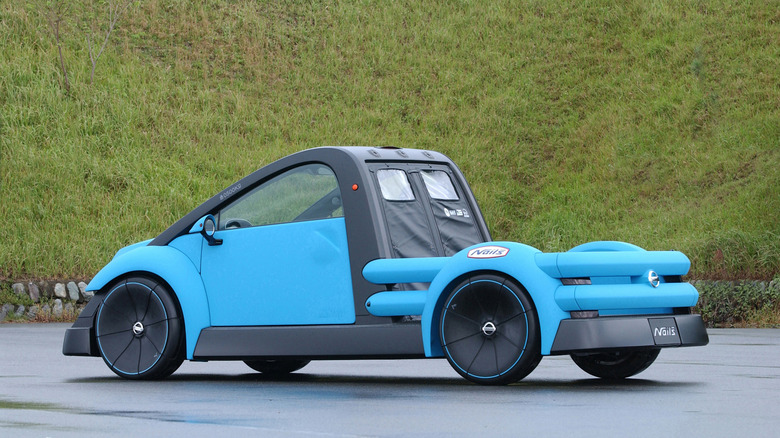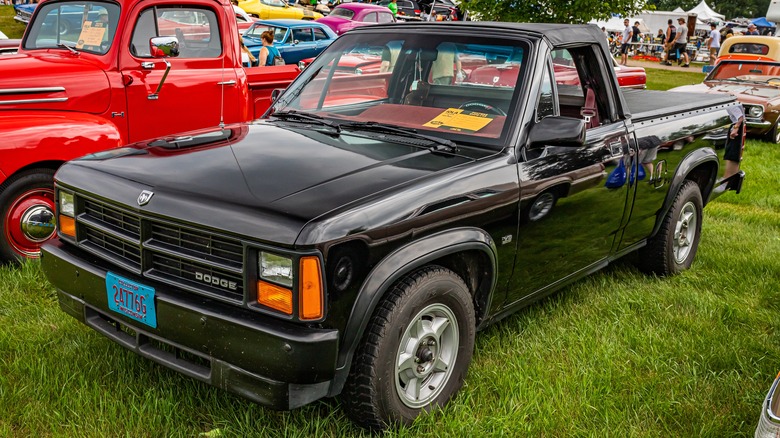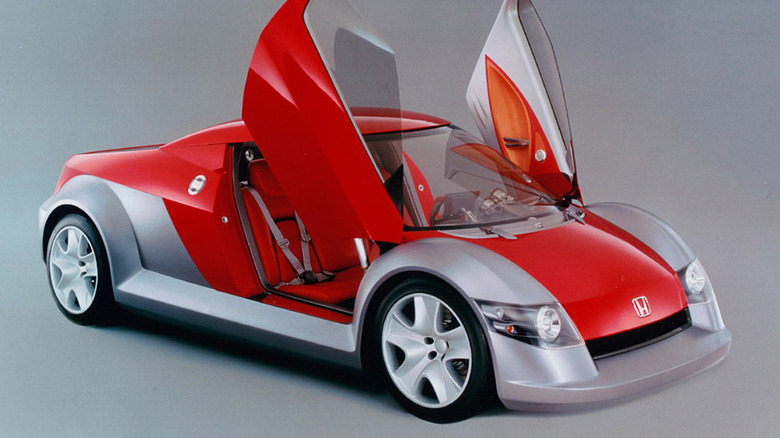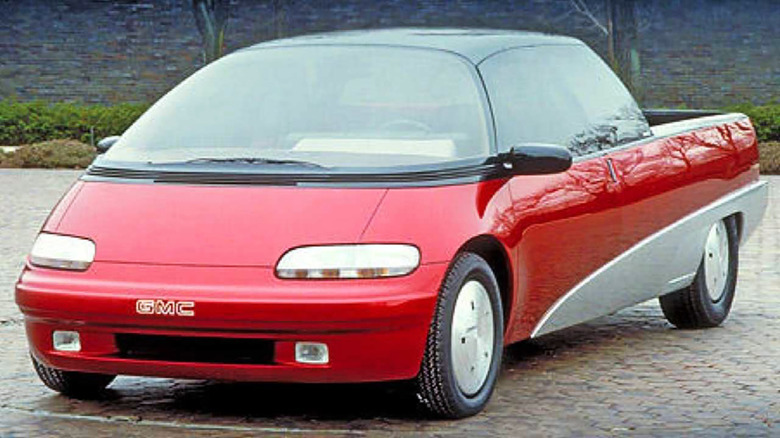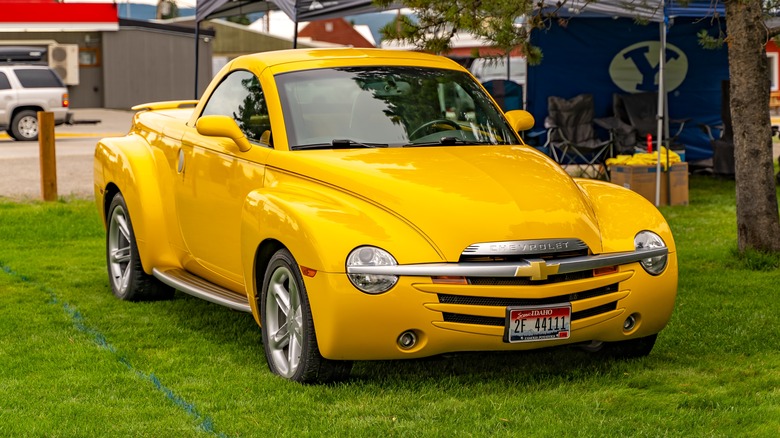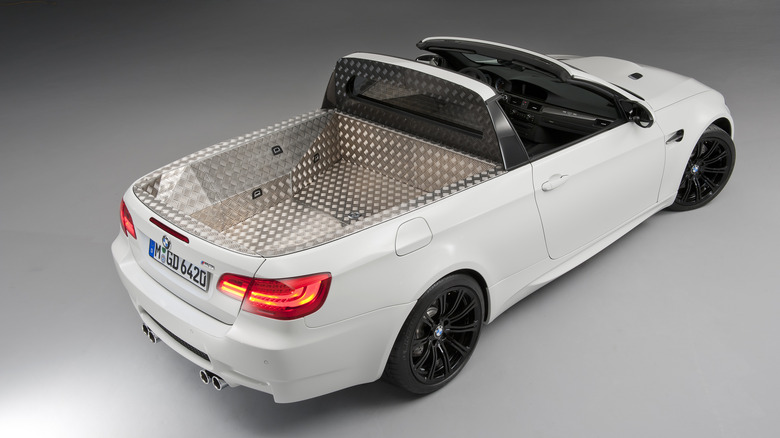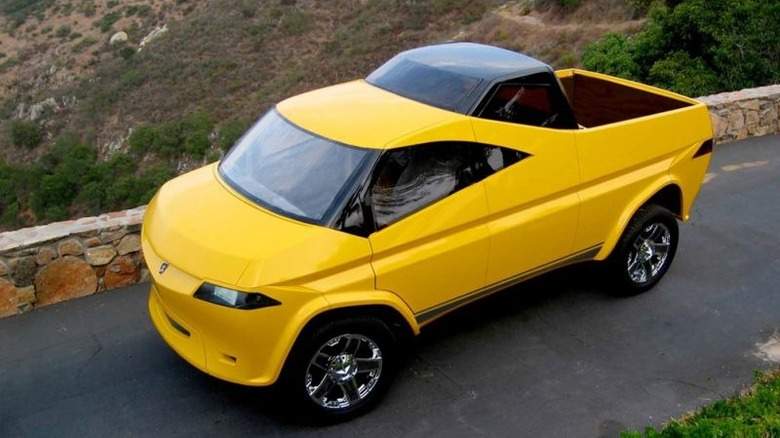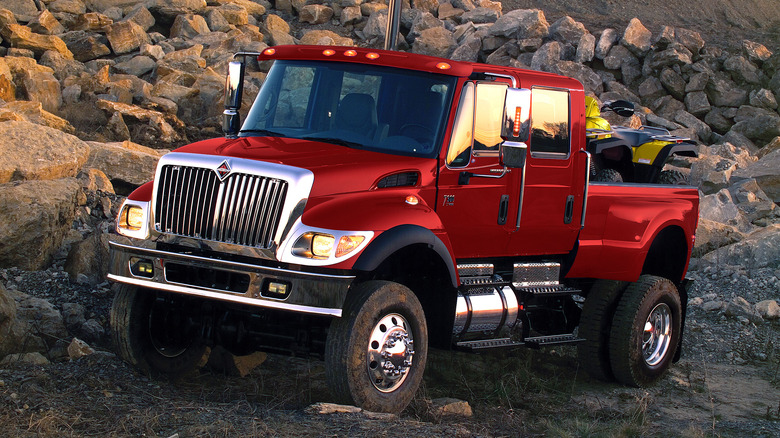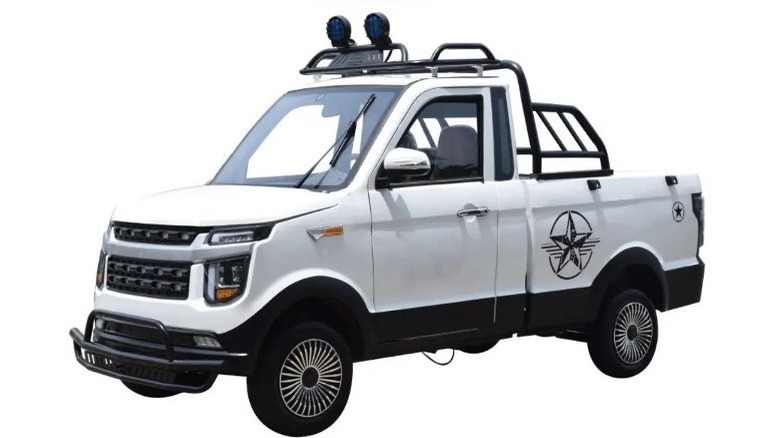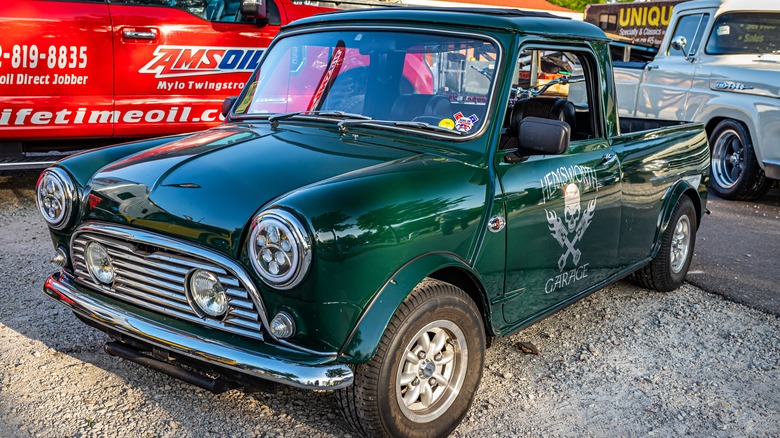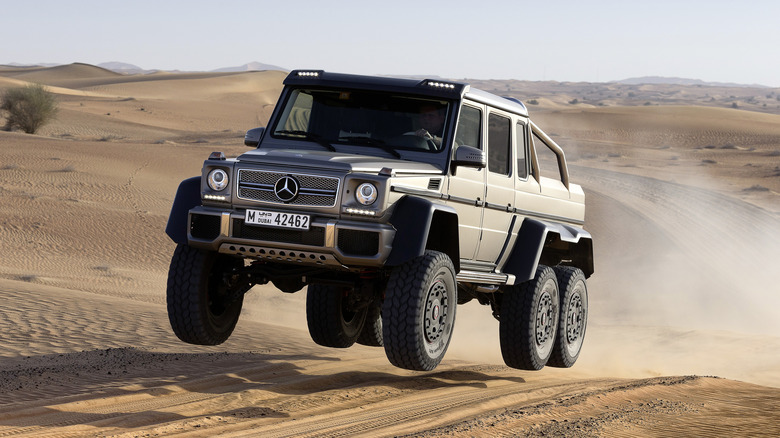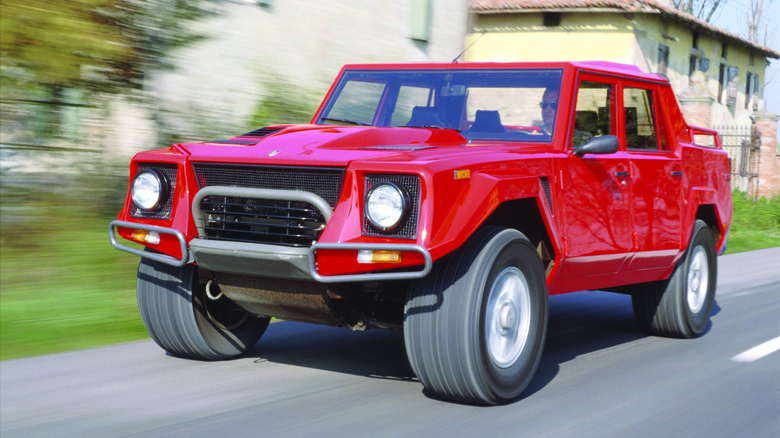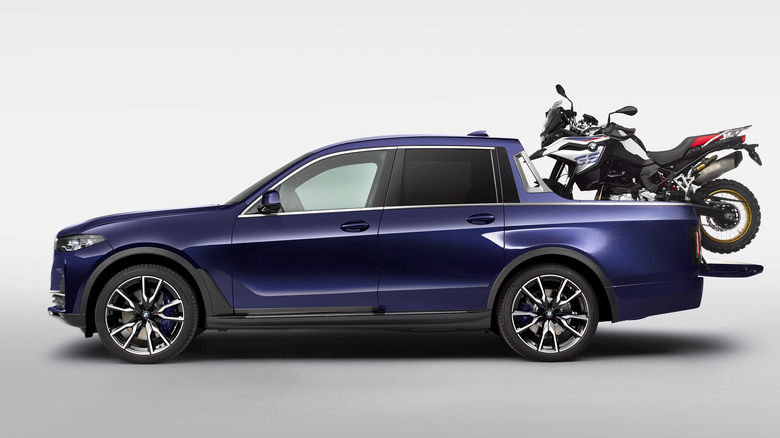15 Weirdest Pickup Trucks Ever Made
Pickup trucks have evolved over the years from humble work vehicles into one of the most popular (and lucrative) segments in the auto industry. That evolution has only been possible thanks to the constant stream of new ideas that manufacturers have offered up over the decades, with concepts and limited-run production vehicles that filled every niche that design teams could think of. Some of those ideas have been so well received that they've changed the course of the industry, but there are plenty more that didn't catch on.
Sometimes, a manufacturer was so confident that its weird new pickup would be well received that it pushed it into production regardless, usually canceling it again after a few years of low sales. In other cases, these oddities were only ever created as one-offs, either to show what was possible, or simply because their creators could never drum up enough interest to get anyone else to actually buy it. Whether it's the pickup truck made out of a sports car, or the minivan with a cargo bed fused onto the back, these are some of the weirdest trucks ever made.
Toyota Tundrasine
The annual SEMA show is always a good place to find weird and wonderful car builds, and at the 2015 event, Toyota launched a concept that — quite literally — stretched the idea of what a pickup could look like. The "Tundrasine" started out as a regular Toyota Tundra pickup, but was stretched into a luxury limousine, with a plush leather interior that was meant to mimic the cabin of a private jet. It measured over 26 feet in length, with its wheelbase clocking in at a whopping 235.9 inches.
Like any limousine, the Tundrasine was designed to be chauffeur-driven, with the VIP passenger able to relax in total comfort in the cavernous rear of the truck. With eight doors in total, the pickup almost looks like a well-Photoshopped April Fool's joke at first glance, but in fact, it's a fully functional one-off creation. Unsurprisingly, Toyota never unveiled any plans to put the Tundrasine into production, although technically, there's nothing stopping someone from sending a regular Tundra to a limousine conversion specialist to make their own version of this unique oddity.
Rinspeed Tatooo.com
Swiss boutique automaker Rinspeed isn't very well known outside of its home country, but it's been responsible for making some of the weirdest concept cars ever over the years. That includes the oddly-named Tatooo.com pickup, a bright orange retro-styled truck that looks more like an obscure Hot Wheels car than something anyone could actually drive on the road. It's not the truck itself that's the strangest part though — rather, it's what it's designed to carry.
The truck includes a miniature crane and a mounting point to carry what Rinspeed calls "B.O.B.," or the "Breathing Observation Bubble." It's essentially a motorized underwater scooter that the company claims would allow novice divers to dive up to 30 feet underwater without a mouthpiece or regulator. As they descended into the water, they'd have to keep their head in the helmet that's attached to the scooter, and an air bubble would form around them so they could breathe. While the idea might work in theory, it should go without saying that having your head stuck in a metal bucket that's attached to a heavy piece of machinery while underwater is inherently very dangerous. The Tatooo.com debuted at the Geneva Motor Show in 2000, but like most of Rinspeed's concepts, it remained just that — a concept, with no production run ever made. In this case, that's probably a good thing.
Nissan Nails
Although they never caught on in America, there's a strong market for small cargo vehicles in Japan, with Nissan's current offering in the segment being the NT100 Clipper. It looks fairly unremarkable for a truck of its size, but over twenty years prior, Nissan presented a radical alternative vision for what the future of tiny pickups could look like. The Nails concept was a small two-seater truck with a low cargo bed designed to make loading and unloading heavy items easier.
The truck's hood, fenders, and doors were coated with a scratch-resistant material, and the unusual shape of the cabin enabled maximum space for the occupants within the truck's small footprint. The press release for the concept excitedly notes that the truck "integrates advanced communications tools including cellular phones," so at least one element of this innovative truck made it into production vehicles. However, the Nails itself got no further than the concept stage, perhaps because of its divisive (some would say ugly) design, and perhaps because Nissan simply didn't see a market for such a weird little truck.
Dodge Dakota Convertible
Chopping the top off a work-ready pickup truck might seem like a bad idea, but Dodge executives insisted at the time that there was solid logic behind their thinking. In a 1989 interview with Car and Driver, the planning chief for the Dodge Dakota line claimed, "there are a lot of convertible pickups running around in California [...] but they're all one-of-a-kinds built by chop shops." Dodge wanted to be the first manufacturer to cash in on this emerging niche, and so a limited run of Dakota Convertibles was approved for production.
Every Dakota Convertible came with a Sport package as standard, with a 3.9-liter V6 that made 125 horsepower. The truck's separate frame meant that rigidity wasn't compromised too much by slicing the top off, although road noise at higher speeds was reportedly a big issue. Dodge originally planned a production run of around 2,000 units, but in the end, 3,759 examples were produced.
Honda Spocket
The term "crossover" is now generally taken to mean a car with attributes of both an SUV and something else like a hatchback, and nearly every manufacturer now has at least one in their lineup. Rewind a couple of decades, however, and manufacturers were still trying all sorts of crossover combinations in an attempt to find the formula for commercial success. One of the many failed attempts was the Honda Spocket, which crossed a pickup with a convertible sports car to make a bizarre vehicle that almost no one wanted.
From the front, it looked like a regular small sports car, but at the rear was a small cargo bed where Honda envisioned drivers transporting sports gear or camping equipment. The bed could be extended by folding the rear seats down, and the roof could be removed for open-air driving. It also packed full-time all-wheel drive, with a hybrid gas-electric engine powering the front wheels and two further small electric motors for the rear. The idea of an all-wheel drive pickup disguised as a sports car might have been unique, but after touring the American car show circuit in 2000, Honda decided it wouldn't be commercially successful. As a result, only one prototype was produced.
GMC Centaur
Creating a truck with a plush car-like interior is hardly unusual today — in fact, many of the best-selling pickups now offer near-luxury trims for deep-pocketed customers. However, when GMC unveiled the Centaur concept in 1988, the idea was still much more novel. Although it was designed to combine the front of a sedan with the rear of a pickup, the high roofline and sloping front end made the Centaur look more like someone fused a cargo bed onto the back of a mid-'90s Toyota Estima minivan.
The engine was mid-mounted under the cargo bed, allowing the cabin to be pushed forward as much as possible for optimal aerodynamics. The 3.0-liter inline-six was reportedly capable of towing up to 5,000 pounds, with a further 2,000-pound payload capacity for the cargo bed. The Centaur was a one-off functional concept that was never intended for production, but rather as a way to demonstrate cutting-edge technologies and ideas that might become mainstream in the future. While minivan-shaped pickups might not have caught on, the core idea of a car-like truck proved to be very much ahead of its time.
Chevrolet SSR
One of the most high-profile pickup truck flops of the last few decades has to be the Chevy SSR, which tried to be a hot rod, convertible, and pickup truck all at once, but didn't manage to convincingly be any of them. As a pickup, it wasn't very practical, with an underwhelming 2,500-pound towing capacity and an impractically-shaped cargo bed. As a convertible, it suffered from annoying vibrations at full speed, plus its divisive retro looks made it a car many people didn't want to be seen in anyway.
As a hot rod, the fact that it was factory-made turned off plenty of buyers, since one of the key elements of hot rod culture is being able to build, and therefore add your own unique twist, to your car. Buying a truck from a dealership just didn't appeal, and most enthusiasts stayed away as a result. Chevrolet managed to shift just over 24,000 examples before axing the SSR after the 2006 model year, eventually closing down the plant that manufactured it altogether.
BMW M3 E92 Pickup
When BMW unveiled its new M3 pickup truck on April 1st, 2011, it was clear that the Munich-based brand was pulling an elaborate April Fools' joke. Except, it wasn't entirely just a gag — the car really did exist, and was originally built to serve as a fun way for engineers at BMW's M development center to shuffle parts around the factory. Someone on the marketing team must have seen the project and decided it would be a good way to generate some light-hearted publicity, but first and foremost, this was a functional service vehicle. It even had a predecessor, as engineers had built another M3 pickup back in the '80s which was still in service until the new car replaced it.
Unlike the original, however, the new M3 pickup was actually certified for the road, making it the only factory-built M pickup to ever wear a license plate. The car was largely a regular M3 apart from its cargo bed, with a 4.0-liter V8 under the hood churning out 414 horsepower. It was limited to 155 mph, although with barely any weight at the back, it was less stable than a regular M3 at high speeds. Since the car was only ever intended to be a fun side project for M engineers, there was never any intention to make a production version.
Barkan Design Counter Balance
As one of the biggest segments in the auto industry, there's never a shortage of startups trying to become the next big pickup manufacturer. In 2009, entrepreneur Elad Barkan debuted the first vehicle from his fledgling startup at the New York International Auto Show, named the "Counter Balance." The odd-looking truck was built on a Chevy Tahoe chassis with a mid-mounted V8 engine, and because of this unusual placement, the rear seats had to be lifted above the front row.
This led to the two-tier glasshouse design, which Barkan claimed gave rear passengers great views out of the truck. The truck ran primarily on gasoline, but Barkan said he had left a designated area under the cargo bed for the potential installation of hydrogen tanks or a battery pack, so alternative fuels could be accommodated in the future. Unfortunately for him, that future never came, as his startup never attracted enough investment to get the truck past the prototype stage.
International CXT
Anyone who's of the opinion that "bigger is better" when it comes to pickup trucks should take a look at the International CXT, a huge pickup that was built on the brand's 7300 severe-service platform. International mostly sold that platform for snow plows, dump trucks, or cement mixers, but bosses decided to create a small production run of civilian pickups in the mid-'00s. It featured a one-ton dualie bed and a 7.6-liter inline-six engine mated to an Allison 2500 five-speed automatic transmission — in other words, it was more heavy-duty than a pickup truck has any right to be.
The truck started at around $100,000, but optional extras could push the final price well north of that figure. Thanks to their rarity and all-conquering nature, they remain in-demand collectors' items today, often changing hands for six figures when low-mileage examples come up for sale. While there are plenty of big trucks that continue to be sold today, almost nothing is quite as comically oversized as the CXT, with one notable exception — the Ford F-650 SuperTruck is still available to commission today, with previous clients including none other than NBA superstar Shaquille O'Neal.
ChangLi Explorer
With online auto purchases becoming more common than ever in the wake of the pandemic, there are now plenty of ways to purchase a pickup straight from your phone or laptop. Most automakers have their own website, and used car dealers are another hassle-free option. However, very few buyers are ever going to think of going to a Chinese wholesale site like Alibaba for their next vehicle. Nonetheless, it is possible to purchase an ultra-cheap electric pickup truck from Alibaba and get it shipped to America, as the folks over at Electrek proved in 2021.
The truck they purchased was called the ChangLi Explorer, and even though it was listed on the site for around $2,000, they ended up paying around $7,000 once shipping and customs fees were taken into account. The Explorer is very cheap, then, but it's no golf cart. Electrek reported that the body panels were made of metal, the air conditioning worked well, and there was even a backup camera. The truck isn't road-legal Stateside, and with a top speed of 25 mph, you wouldn't want to drive it far anyway. Nonetheless, this is a fully functional EV pickup truck, albeit a very weird one.
Austin Mini Pickup
The Mini is an icon of British automotive engineering, but it's hardly the first car that springs to mind when you think of a pickup. However, in the '60s, Austin produced a limited number of Mini Pickups, with many of them going on to live a hard life at the hands of tradespeople and business owners. That has meant that most haven't survived to the present day, making them a very rare sight, especially in America.
It's thought that around 58,000 examples left the factory, with only a very small fraction of those making it to the States. It's still rare to find one even in the Mini's home country, with the remaining examples in Britain drawing plenty of attention whenever they appear at shows or events. Although, even if they weren't so rare, the odd combination of a classic Mini with a pickup bed would have still turned heads.
Mercedes-Benz G63 AMG 6x6
The 6x6 Mercedes-Benz G-Class was originally designed for the Australian Army, but in 2013, the German automaker unveiled a civilian version that had been fettled by AMG. It packed a 5.5-liter V8 engine making 536 horsepower and 560 pound-feet of torque, alongside a seven-speed automatic transmission. With over 18 inches of ground clearance, the G63 AMG 6x6 was built for storming over sand dunes, and in fact, much of the early marketing material for the car focused on its desert-crossing capabilities, with a focus on attracting wealthy Middle Eastern customers.
It might have been an all-terrain monster, but the G63 AMG 6x6 was also suitably luxurious inside. It was decked out with swathes of leather and polished bamboo accents, alongside the tech and gadgetry that was standard in the brand's other top-spec G-Wagons at the time. Now, did anyone actually need a gigantic luxury 6x6 with the off-road capabilities of a military truck? Of course not, but its delightfully over-the-top specification was what made it stand out among the crowds of other high-end luxury vehicles at the time, and it has remained a desirable collectors' car as a result.
Lamborghini LM002
Although the original "Lambo truck" is widely credited as being the forefather of modern super-SUVs, it's not technically an SUV at all, but rather a pickup truck. It has a small, impractical cargo bed at the rear, although it's not like any of the LM002's owners would have ever put it to use. The selling point of the "Rambo Lambo" is instead its off-road capabilities and V12 engine, which came in two flavors: a mad 5.2-liter unit borrowed from the Euro-spec Countach Quattrovalvole, or an even madder 7.2-liter engine borrowed from one of Lamborghini's racing boats.
Base prices for the truck started at around $120,000, which equates to roughly $330,000 in today's money. Its high price meant that it was a slow seller, with only 328 units built between 1986 and 1993. Lamborghini has never made another pickup truck, but the LM002's spiritual successor, the Urus SUV, became the brand's best-selling model in 2022.
BMW X7 Pickup
BMW might not have a pickup truck in its production lineup, but a group of trainees at the brand's development academy designed a one-off truck based on the luxury X7 SUV. The rear of the car was extended to accommodate the pickup bed, with its primary function being to transport motorcycles as part of a BMW Motorrad event. The interior is standard X7 fare, with plenty of leather and polished metal and wood accents.
The bed itself is clad in handcrafted teakwood, while the distinctive Tanzanite Blue paint is designed to evoke the impression of a yacht. Considering this is a luxury pickup clad in fine materials, it seems weird that the brand used it to advertise transporting bikes. You wouldn't think anyone would want to risk scratching the fine wood and fancy paintwork, after all. The unique pickup is road-legal and sports German license plates, but after images of it were released, BMW was quick to dispel any rumors about a production version. So, it seems that this odd one-off creation will likely remain the only example of a Bimmer with a cargo bed for the foreseeable future.
